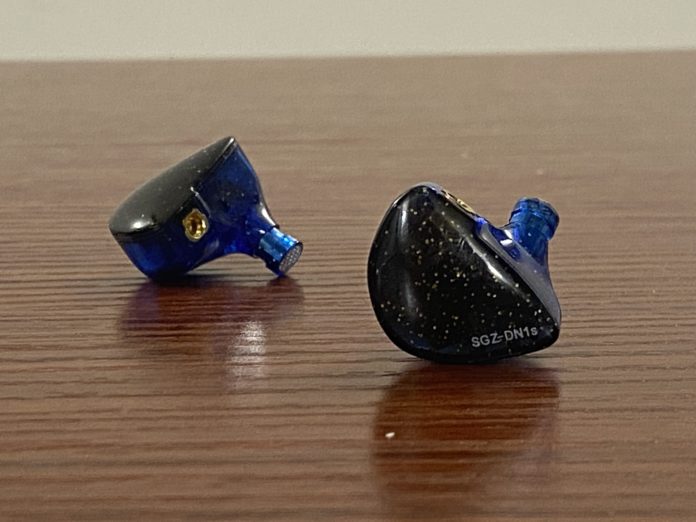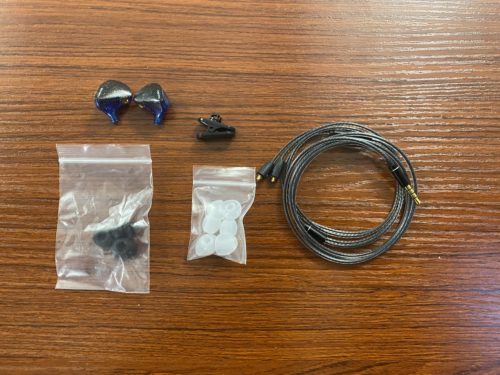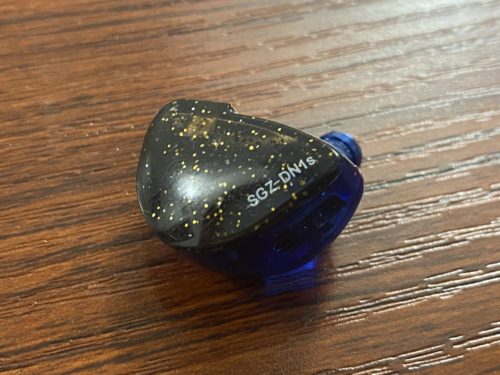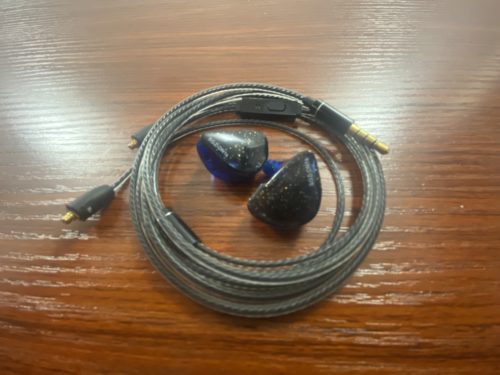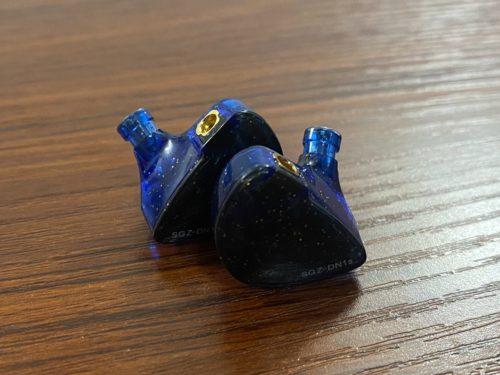I recently looked at one of BGVP’s budget IEM models, the DH5 but that wasn’t even one of the most economical selections in their catalog. That would have to go with their SGZ-DN1s model, a rare hybrid IEM with a remote/mic that only costs thirty dollars. Is this just a cheap set of earphones you can find anywhere, or something truly special?
What You Get
- Vocal ear tips: L/M/S
- Balanced ear tips: L/M/S
- Storage bag: *1
- Brush: *1
Look and Feel
I expect the build quality to take some sort of a dip, but that’s okay when the aesthetic design still works. The DN1s may have a plastic housing, but I wouldn’t say it feels cheap in any way. Its body feels light and even though it’s not all that durable, the way that the earphone fits so naturally in my ear makes its value more significant. Although it probably won’t work the same for everyone, the DN1 for me was incredibly comfortable for an IEM. It doesn’t even necessarily possess the same ergonomic style cavity as other IEMs have, but I didn’t really miss it here.
Design
There’s a surprising amount of components at play that gives the DN1s a distinct output that sets itself apart for a vast majority of earphones at this price. You get a single 8mm dynamic driver that has a biofilm layer that is designed to strengthen the low frequencies, as well as widen the soundstage, and a custom balanced armature for high frequencies. This design makes sense of the signal flow by giving it a crossover that effectively cuts interference between these two systems.
Soundstage
For thirty dollars I’d be impressed with any kind of competent soundstage, and that’s exactly what the SGZ-DN1s does. This obviously won’t blow you away, but in terms of width, these IEMs go out of their way to present an expanded soundstage with good stereo localization. The imaging is very solidified, and although sound elements sometimes appear slightly busy they still give the stereo field some well enough fullness. Layering also divides the different instrumentals in a satisfying way, which separates the layers clearly enough to deliver an articulate soundstage for the price.
Low End
If you’re not looking for the cleanest low-end, you might be pretty impressed with the drive of this bass response. Its sub-bass provides a sufficient amount of lift and gives the tone a good bit of rumble. The texture of the mid-bass balances well with this tone, as it delivers warmth and smoothness that keeps the timbre from being too boomy. You get a meaty low-end without any of the unflattering elements that can affect the rest of the frequency response. Anyone spending thirty dollars for a pair of IEMs will have no problem enjoying this response.
Mids
The warmth of the mid-bass extends well into the low-mids but smooths out significantly in the rest of the midrange frequency response. There’s still a good amount of detail here, with some admirable clarity and tone, but it’s not exactly presented with any forward-leaning emphasis that usually makes the music pop. However, I still respect how functional these mids are for what the DN1s is, as it reproduces its timbre in a complementary way that isn’t destructive to the sound signature and actually gives you some colorful tone to relish in.
Highs
I think the treble region on the DN1s is meant to perform a strictly inoffensive response, as the highs tend to be the region where casual listeners can get turned off. So here, the highs present themselves as smooth and reserved, providing a fitting top end to the DN1’s sound signature, but not one with a ton of detail to bite on. It avoids harshness but sacrifices some considerable tone that lessens the textural enjoyment of these IEMs. However, the treble still works to reproduce a soft timbre that luckily doesn’t recess its frequency content, and creates a more natural sound signature.
Summary
You really can’t find much to criticize when you’re getting an IEM of this quality for thirty dollars. Some of its characteristics may feel like they fit the price, but others, like the bass and soundstage, go above and beyond. The remote/mic also adds a utility that a lot of other IEMs just don’t have even when there could be a significant need for one. If you’re looking for a budget IEM with good, impactful bass, that you can use both for casual listening and for calls, I don’t see why you would have any reason to skip out on the SGZ-DN1s.
| Pros | Cons |
|
|
The BGVP SGZ-DN1 is available at Audio46.
Compare the ranking of various headphones, earbuds and in-ear monitors using our tools.
Discuss this, and much more, over on our forum.
---MAJORHIFI may receive commissions from retail offers.


